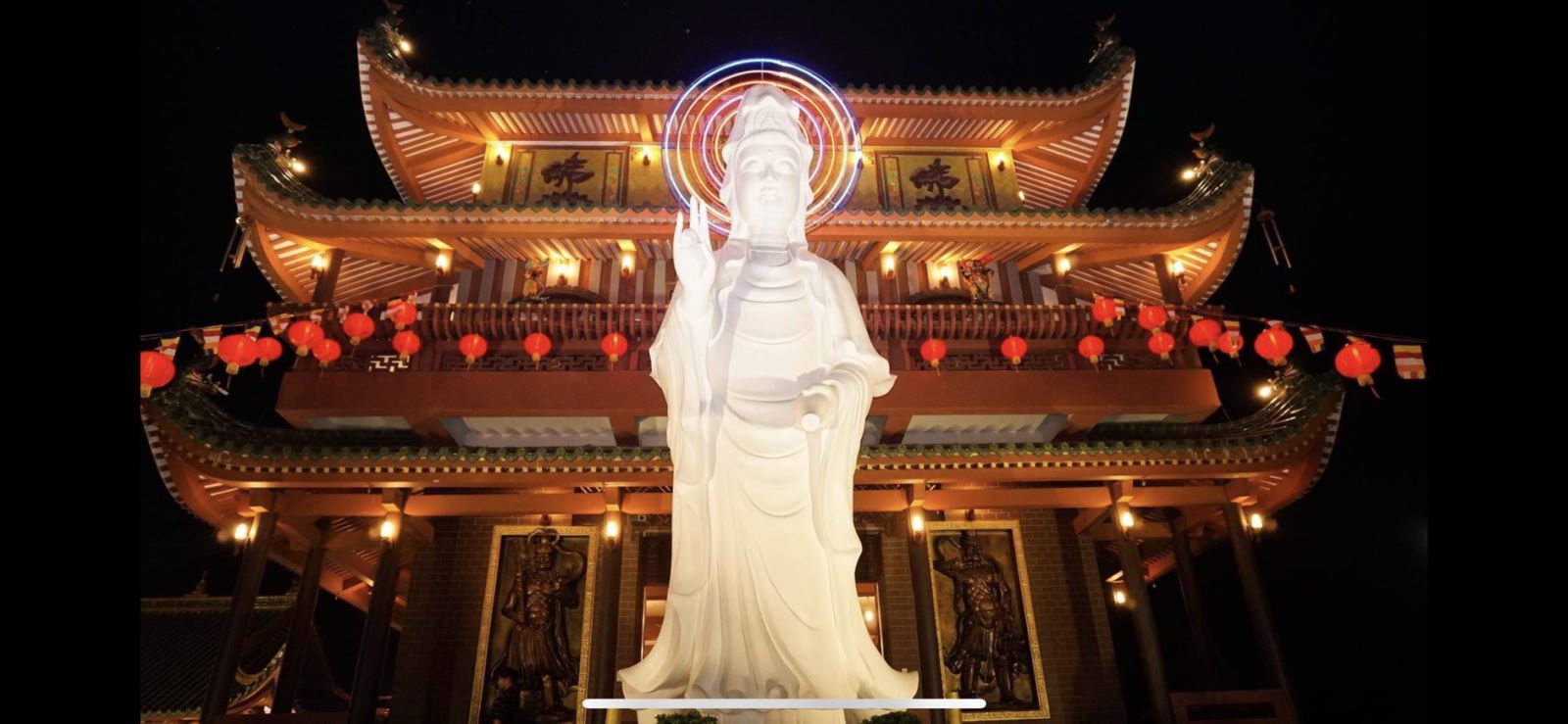Hanh Son Pagoda
Hanh Son Pagoda (Chùa Hạnh Sơn) is a peaceful and spiritual Buddhist temple located near Da Hang Mountain in Ninh Hai District, Ninh Thuan Province. Surrounded by rocky landscapes and pristine nature, the pagoda offers a quiet retreat for worshippers and visitors seeking calmness and spiritual reflection. Though not as well-known as other major temples, Hanh Son Pagoda is a hidden gem that blends Buddhist tradition with the beauty of nature.
1. History and Background
Hanh Son Pagoda has a long-standing connection to the local community. Built many decades ago by Buddhist monks and local followers, the temple was established as a place for worship, prayer, and moral education.
Though the exact date of its founding is unclear, it has remained a sacred place for generations of people in the surrounding villages. It is maintained by resident monks and supported by locals who visit regularly to offer incense, meditate, and attend Buddhist ceremonies.
2. Architecture and Design
The architecture of Hanh Son Pagoda is simple and traditional, reflecting the humble character of rural Vietnamese Buddhism. Rather than grand structures, the pagoda consists of:
-
A main prayer hall with wooden beams and a tiled roof.
-
Statues of Buddha and Bodhisattvas, respectfully placed for worship.
-
Natural rock formations and a small cave area that give the temple a special atmosphere.
-
A few stone steps and pathways leading to quiet spots for prayer or rest.
The pagoda is nestled among trees and rocky terrain, and visitors often hear the sounds of birds and rustling leaves while walking around the grounds.
3. Spiritual and Cultural Significance
Hanh Son Pagoda is not just a temple; it is a spiritual refuge for locals. It plays a key role in traditional Buddhist festivals such as:
-
Vesak Day (Buddha’s Birthday)
-
Vu Lan Festival (Ghost Festival)
-
Lunar New Year (Tết)
During these times, people gather to chant, make offerings, and pray for health, peace, and prosperity. The quiet setting of the pagoda makes it ideal for meditation and inner reflection, especially for those who want to step away from the noise of daily life.
4. Visiting Tips
-
Location: Near Da Hang Mountain, Tan Hai Commune, Ninh Hai District, Ninh Thuan Province.
-
Accessibility: Best reached by motorbike or private car. Some walking over uneven paths may be required.
-
Opening Hours: Typically open during daylight hours.
-
Entrance Fee: Free (donations are welcomed).
-
Dress Code: Wear modest clothing suitable for a place of worship.
-
Best Time to Visit: Morning or late afternoon, especially during spring or after rains, when nature is at its most vibrant.
5. How to Enjoy Your Visit
-
Walk slowly through the temple grounds and listen to the sounds of nature.
-
Enter the main hall to offer incense and observe the tranquil interior.
-
Sit quietly near a rock or tree to meditate or reflect.
-
Bring a small offering such as fruit, flowers, or incense sticks.
-
Be respectful—this is an active place of worship for the local Buddhist community.
Conclusion
Hanh Son Pagoda may not appear in glossy travel brochures, but its authenticity, natural beauty, and spiritual atmosphere make it a truly special place in Ninh Thuan. For those seeking peace, reflection, or a closer connection with Vietnamese Buddhism, this small mountain-side temple offers a meaningful and memorable experience.



